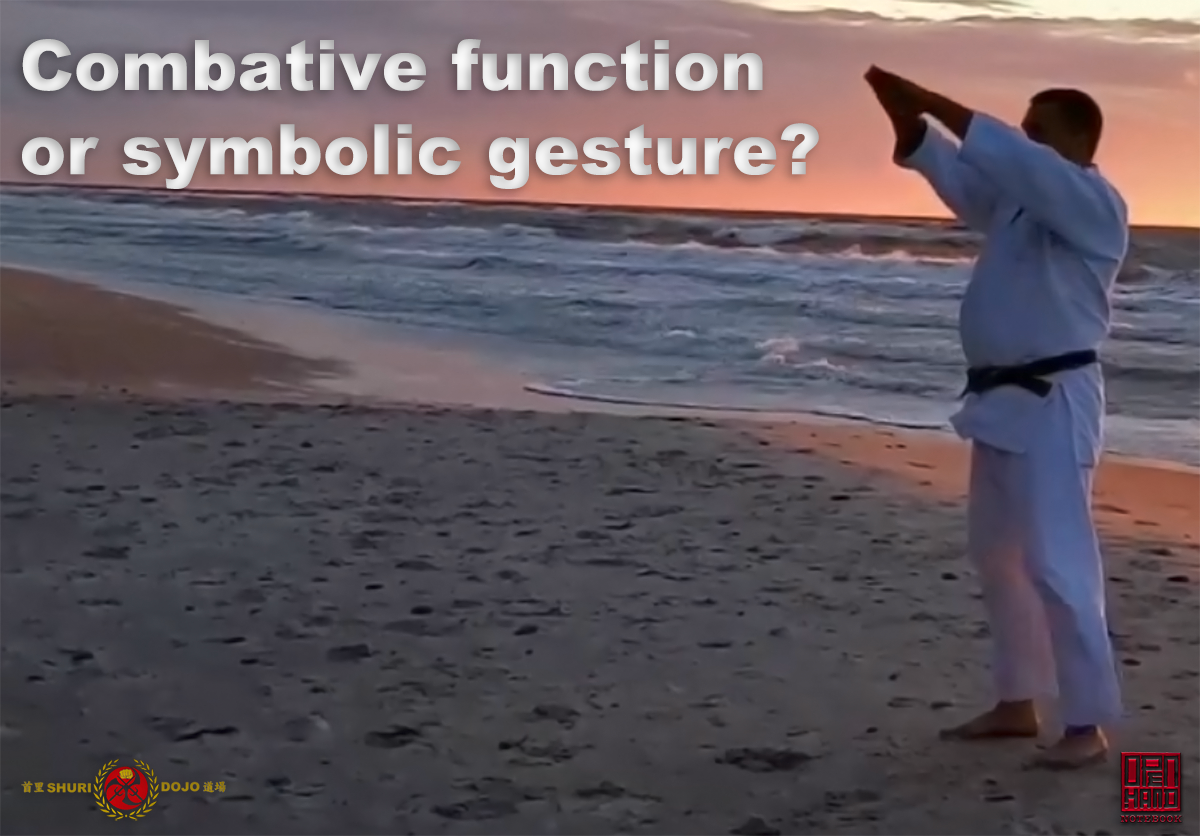
I’m a strong believer in that if you are passionate about something, the martial arts or otherwise, you should also study its history. Understand the context to which something was created.
.
What can an individual learn from history? Through history, we can learn how past societies, systems, and ideologies were built, and operated in which context. History also encourages a deeper understanding.
.
There is no doubt that the kata are a record of the combative techniques, principles and concepts of an individual, created at the time when there was a need for real self-defense.
.
I believe there are no opening “salutations” in kata. Each and every move is designed to have a combative function. Why would anyone waste time with a symbolic gesture when you could be fighting for your life?
.
Some have stated that there is a; “moment of pause, before the storm”; or to “gather energy”; or to show an “attacker that you are unarmed”; or to “look at the sun or moon”; …… it sounds ridiculous doesn’t it? But there are those who actually believe this!
.
If the kata were created to have a combative function, wouldn’t it be logical, wouldn’t it be common sense, to ensure each move or technique within the kata had a function that would protect you from harm?
.
We know that the creators of the kata were martial artists, protecting themselves from “villains or ruffians” (Funakoshi) or civilian attacks. Therefore common sense would dictate, wouldn’t it, that there would be no superfluous, non-combative gestures contained within the kata? Right?
.
If we were creating kata today to use as a self-defense template for the modern world, would we incorporate an empty or symbolic gesture? It would be foolhardy at the least, wouldn’t it?
.
“There are no ‘salutation’, religious or empty movements in kata. All movements in the kata have meaning.”- Toguchi Seikichi (1917-1998) 10th dan Goju Ryu
.
In October 1908, Itosu Anko wrote a letter, “Ten Precepts (Tode Jukun) of Karate”, to draw the attention of the Ministry of Education and the Ministry of War in Japan. The beginning of the translation of that letter reads: “Karate did not develop from Buddhism or Confucianism”…. This to me makes it clear that karate is not based on Buddhist or Confucian principles. Itosu obviously felt it important to establish from the beginning that the art he practiced was not an offshoot of these religions or philosophies.
.
My logical, common sense position, is that a combative kata is made up of combative motions and principles, NOT empty gestures. If you don’t believe me, just look at history. It is there right in front of you.
.
History is not about memorizing a list of facts or dates. It requires interpretation and analysis of information to make connections to develop a full picture. History is packed with incredible, real-life information.
.
Studying history will provide you with a more rounded skillset and an improved ability to think critically. History gives you the tools to analyze and explain problems in the past, it positions you to see patterns that might otherwise be invisible in the present. Understanding history can help you develop your skills and transform you into being a better more knowledgeable student (or instructor).
.
Critical thinking, logic and common sense should be at the heart of understanding kata, not hearsay and misinformation. 👊🥋
.
.
